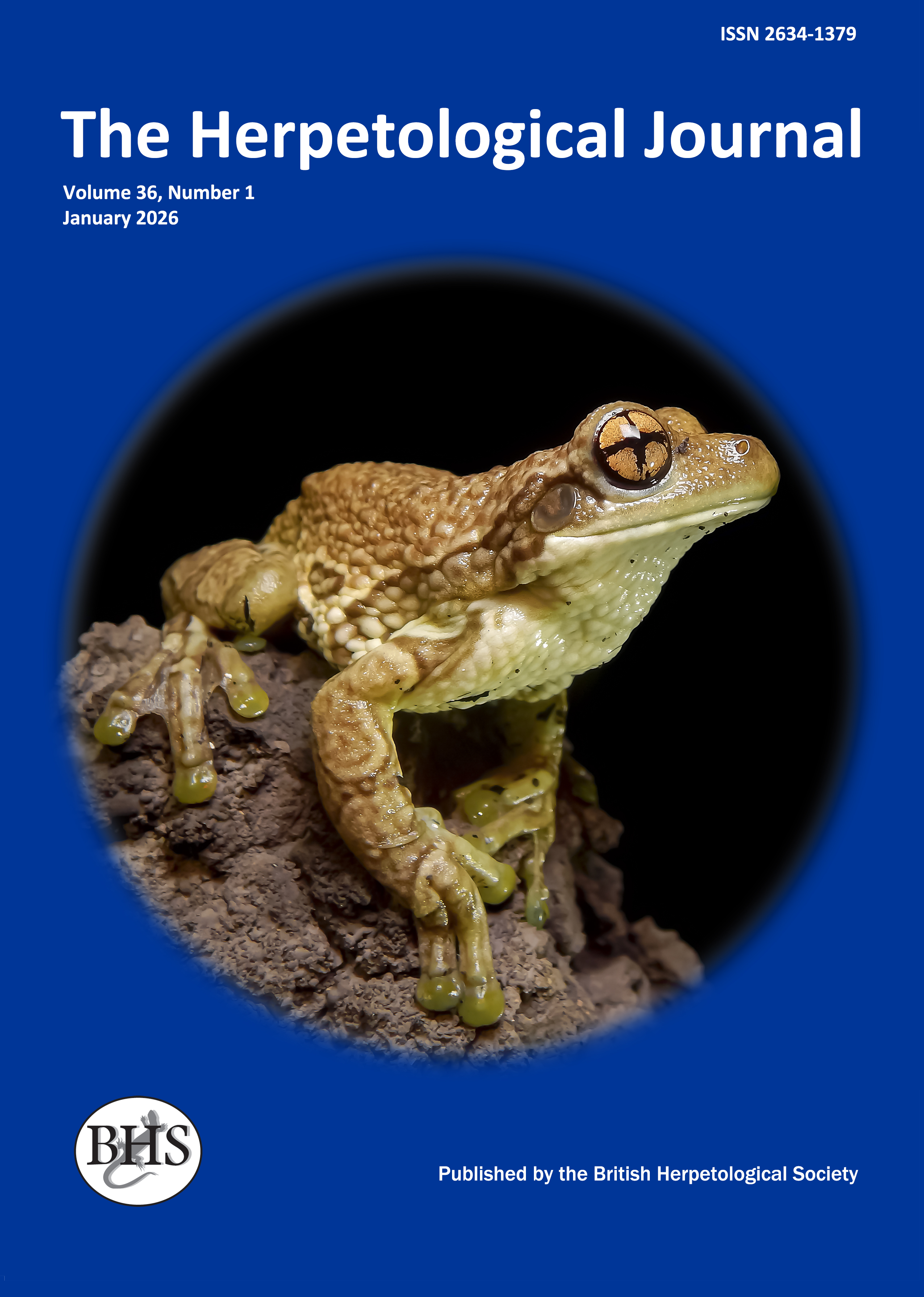
The Herpetological Journal
The Herpetological Journal is the Society's prestigious quarterly scientific journal. Articles are listed in Biological Abstracts, Current Awareness in Biological Sciences,Current Contents, Science Citation Index, and Zoological Record.
ISSN 0268-0130
2023 Impact Factor for the Herpetological Journal is 1.1, with the Journal sitting just below Quartile 2 in Zoology, at percentile 46.9
pdf 03. Effects of environmental factors and conservation measures on a sand-dune population of the natterjack toad (Epidalea calamita) in north-west England: a 31-year study
1512 downloads
Open Access
https://doi.org/10.33256/hj29.3.146154
pp. 146-154
Authors: Philip H. Smith & Graeme Skelcher
Abstract: A 31-year study monitored Britain’s largest natterjack toad population on the Sefton Coast sand-dune system in north-west England. Key objectives were to describe changes in numbers and breeding success, relate these to environmental variables and explore whether conservation efforts have been well targeted. Considerable variation was found in the number of water bodies used for spawning, the number of spawn strings laid and breeding success based on estimated toadlet production. There was a declining trend in annual totals of spawn strings and toadlets. Positive correlations were established between spring and April rainfall and both spawn count and toadlet production. April rainfall for the study area declined between 2000 and 2017. Premature desiccation of water bodies and associated poor breeding success were frequently observed, there being a positive relationship between water-table height and toadlet numbers. A long-term declining trend in the height of the water-table was established. The mean adult population of Sefton natterjacks was estimated at about 1200 individuals, with a peak around 3150. Successful breeding is increasingly reliant on management to excavate appropriately designed and managed “scrapes” that hold water long enough for metamorphosis to occur. Overgrowth of vegetation and loss of dynamism in the dune system threaten both the natural production of new breeding slacks and the natterjack’s open terrestrial habitat. Encouragement of dune dynamics by removing trees and scrub, increasing areas subject to livestock
grazing and mechanical rejuvenation may offer the best hope of conserving this species in the future.
Keywords: Amphibian; climate-change; rainfall; sand-dunes; vegetation-overgrowth; water-table

